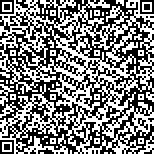| 引用本文: | 李波,阳秀芬,王锦溪,易木荣,何雄波,陶雅晋,冯波,颜云榕.南海大眼金枪鱼(Thunnus obesus)摄食生态研究.海洋与湖沼,2019,50(2):336-346. |
| |
|
| |
|
|
| 本文已被:浏览 2455次 下载 1398次 |

码上扫一扫! |
|
|
| 南海大眼金枪鱼(Thunnus obesus)摄食生态研究 |
|
李波1, 阳秀芬1, 王锦溪1, 易木荣1, 何雄波2, 陶雅晋1, 冯波1,3,4, 颜云榕1,3,4
|
|
1.广东海洋大学水产学院 湛江 524088;2.集美大学水产学院 厦门 361021;3.广东海洋大学南海渔业资源监测与评估中心 湛江 524088;4.广东海洋大学深圳研究院海洋渔业信息化技术中心 深圳 518000
|
|
| 摘要: |
| 根据2011年12月—2013年2月于我国南海海域采用金枪鱼延绳钓以及灯光罩网调查捕获的大眼金枪鱼(Thunnus obesus)的各项基础生物学以及胃含物的数据,对其摄食生态进行了分析研究。结果表明:(1)南海海域大眼金枪鱼的食物组成包括鸢乌贼、帆蜥鱼、金色小沙丁鱼、飞鱼、竹荚鱼、鲐鱼、小公鱼属、圆鲹属以及不可辨别的鱼类与虾类,其主要饵料生物为鸢乌贼(%IRI=45.21),其次为金色小沙丁鱼(%IRI=21.36)和帆蜥鱼(%IRI=13.72);(2)空胃率与平均饱满指数随季节变化明显,空胃率在春季时会达到顶峰(37.9%),秋季时最低(16.7%),呈先下降后上升趋势,同时平均饱满指数也在春季达到最高值(0.33),随季节下降并稳定于0.1,空胃率随性腺成熟度的提高有明显上升趋势,平均饱满度指数在性成熟度Ⅰ期与Ⅵ期均呈现高值(1.18、1.04);(3)Shannon-Weiner多样性指数H'和Pielou均匀度指数J随季节变化呈现出明显的变化,Shannon-Weiner多样性指数H'随叉长组基本在1.52—1.72之间变化,Pielou均匀度指数J随性腺成熟度的提高有逐步下降的趋势;(4)营养长度(NR)较高,说明其摄食的饵料成分多、氮来源较复杂,基础食物来源(CR)和生态位总空间(TA)的冬季指标值近乎夏季指标的两倍;通过δ15N稳定同位素法计算大眼金枪鱼的平均营养级为4.73。总体上,南海海域大眼金枪鱼主要以头足类和鱼类为食,其摄食习性与季节和个体发育相关,在食物链中处于较高营养位置。 |
| 关键词: 南海海域 大眼金枪鱼 摄食习性 碳氮稳定同位素 营养级 |
| DOI:10.11693/hyhz20180900215 |
| 分类号:S931.1 |
| 基金项目:国家重点研发计划资助,2018YFD0900905号;国家自然科学基金项目,41376158号;广东省深远海渔业管理与捕捞工程技术研究中心项目,2016.11—2019.11。 |
附件 |
|
| FEEDING ECOLOGY OF BIGEYE TUNA (THUNNUS OBESUS) IN THE SOUTH CHINA SEA |
|
LI Bo1, YANG Xiu-Fen1, WANG Jin-Xi1, YI Mu-Rong1, HE Xiong-Bo2, TAO Ya-Jin1, FENG Bo1,3,4, YAN Yun-Rong1,3,4
|
|
1.Fisheries College, Guangdong Ocean University, Zhanjiang 524088, China;2.Fisheries College, Jimei University, Xiamen 361021, China;3.Center of South China Sea Fisheries Resources Monitoring and Assessment, Guangdong Ocean University, Zhanjiang 524088, China;4.Center of Marine Fisheries Information Technology, Shenzhen Institute of Guangdong Ocean University, Shenzhen 518000, China
|
| Abstract: |
| According to the data of individual biology and stomach contents of bigeye tuna (Thunnus obesus) captured in tuna long-line fishing and lighting net surveys in the South China Sea from December 2011 to February 2013; feeding ecology was analyzed and studied. The results show that (1) the food composition of bigeye tuna in the South China Sea area includes Sthenoteuthis oualaniensis, Alepisaurus ferox, Sardinella aurita, Cheilopogon agoo, Trachurus japonicus, Scomber japonicus, Anchoviella sp, Decapterus sp, and indiscriminable fish and shrimps, the main food organism is Sthenoteuthis oualaniensis (%IRI=45.21), Sardinella aurita (%IRI=21.36) and Alepisaurus ferox (%IRI=13.72); (2) the percentage of empty stomach and mean stomach fullness index changed significantly with the season. The percentage of empty stomach reached the highest (37.9%) in spring and the lowest (16.7%) in autumn, which decreased first and then increased, and the mean stomach fullness index reached the highest in spring. Value (0.33), falling with the season and stabilizing at 0.1. The percentage of the empty stomach was associated with gonad maturation. There was a significant increase in the maturity of fish gonad, and the mean stomach fullness index showed high values (1.18, 1.04) in the gonad maturity I and VI stages; (3) the Shannon-Weiner diversity index H' and the Pielou evenness index J showed significant changes with the season (P<0.01). The Shannon-Weiner diversity index H' ranged between 1.52 and 1.72 with the fork length group, the Pielou evenness index J has gradually decreased with the increase of maturity of the fish gonad. (4) The higher δ15N difference (NR), indicating that it has more bait ingredients and more complicated nitrogen sources; the winter indicator value of the δ13C difference (CR) and Total area (TA) is nearly twice the summer indicator. According to the δ15N stable isotope method, the average trophic level of bigeye tuna was 4.73. In general, bigeye tuna of the South China Sea mainly feed on cephalopods and fish, and their feeding habits are related to season and individual development, and are in a higher trophic level in the food chain. |
| Key words: the South China Sea bigeye tuna Thunnus obesus feeding habits stable carbon and nitrogen isotopes trophic level |
|
|
|
|
|
